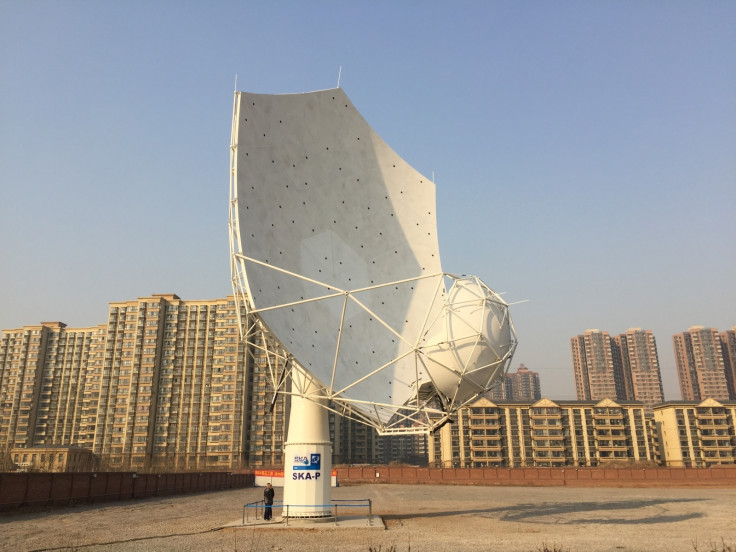The universe's oldest sounds will soon be recorded by the world's largest radio telescope array
The Square Kilometre Array will look for answers to the universe's most fundamental scientific questions.

An array of 3,000 radio telescopes would soon be installed in the Australian outback and the South African desert to tune in and listen to the universe's oldest sounds. The project will involve researchers from across the world including China, Australia, Britain and parts of Europe. Together, this planned array of telescopes will be the world's largest astronomical instrument.
Called the Square Kilometre Array (SKA), each of the dishes will be 21 metres tall, notes a report by Brinkwire. A prototype of the dish design was unveiled at a test site in Shijiazhuang, China on Tuesday (6 February). The project will also erect another prototype at the South African site by April, notes the report.
The construction of the SKA has reportedly been pushed to 2026 as there are a few funding and diplomatic hurdles that first have to be sorted out as it is a multi-national effort. "It's great to actually see metal being deployed," says Phil Diamond, director-general of the SKA Organisation, based in Manchester, UK. "This is the culmination of a 5-year design program."
The China Electronics Technology Group Corporation (CETC54) has built and assembled the telescope, notes a release made by the SKA Organisation. The dish is 15 metres in diameter and is capable of covering a broad frequency range from 350 MHz to 15.3 GHz.
CETC54 was reportedly tasked with the design and production of the prototype dish. Particularly, in creating its highly precise main reflector and sub-reflector. The telescope's backup structure and pedestal were also made by the same company.
"This is a mature method developed by CETC54. Applied to the SKA dish, it allows us to achieve and maintain the dish surface to a very precise surface-accuracy level as well as consistency for all panels", said Wang Feng from the Joint Laboratory for Radio Astronomy Technology (JLRAT).
German MT Mechatronics (MTM) has designed and will manufacture the precise hardware and electronics including the drive units and electronics that are used to move the dish.
"We've been entrusted with demonstrating precision engineering in order to move the telescopes with up to a thousandth of a degree accuracy, as well as reliability to produce over 130 such systems behaving equally well." Lutz Stenvers, Managing Director of MTM and SKA Dish Structure Lead Engineer, said.
All of these components, including an Italian-made feed indexer that positions receivers –each weighing over 165 kg– with sub-millimetric precision were put together for the prototype unveil. The testing phase is up next.
"We will be putting the dish through its paces to see how it responds to different commands and whether it performs as expected," Wang Feng added. "This will allow us to spot any discrepancies and fine-tune the design if needed. The next step will be to test it on site with its instrumentation."
The SKA, after construction, will be used, according to the organisation's website, to explore these science questions:
- How were the first black holes and stars formed?
- How do galaxies evolve and what is dark energy?
- What generates giant magnetic fields in space?
- Are we alone in the universe?
- Was Einstein right?
Commenting on the SKA, Australia's Commonwealth Scientific and Industrial Research Organisation's director of astronomy and space science, Douglas Bock said it is a "global science project, the like of which we haven't had".





















